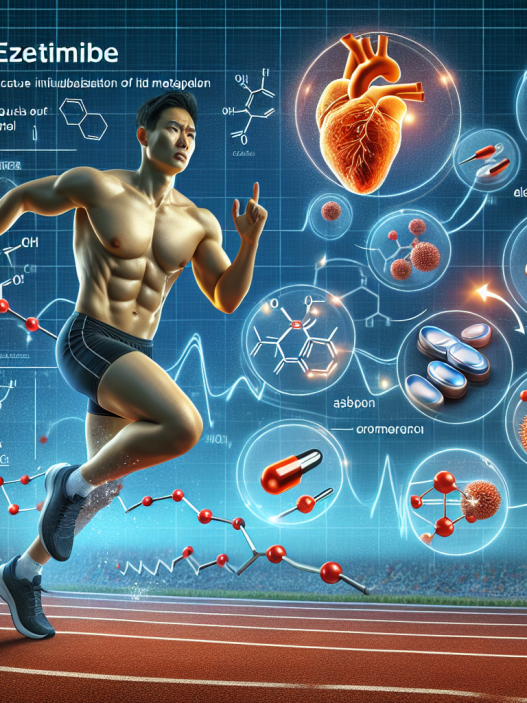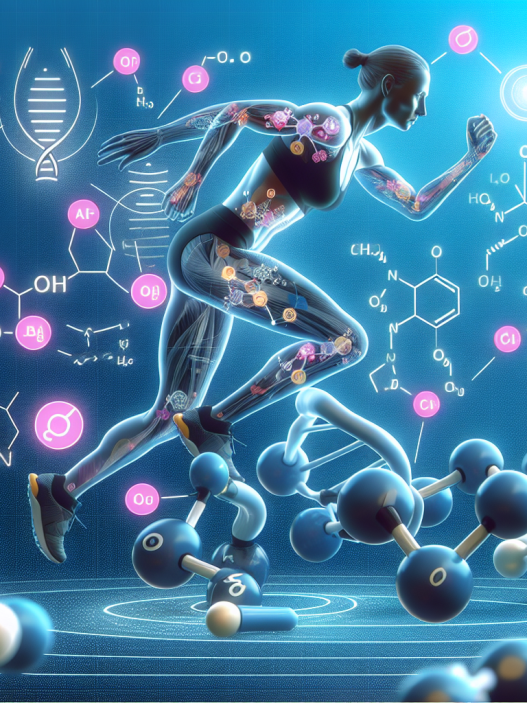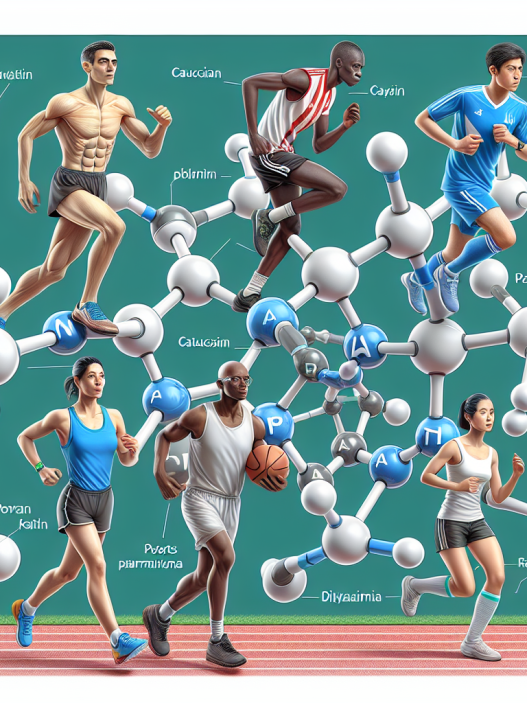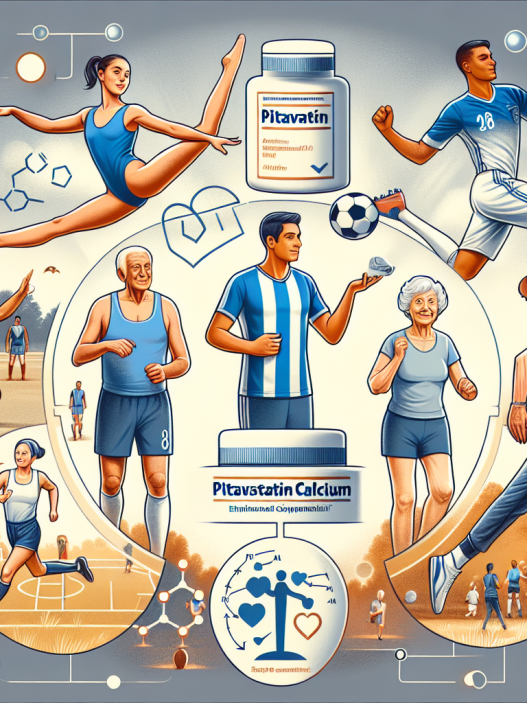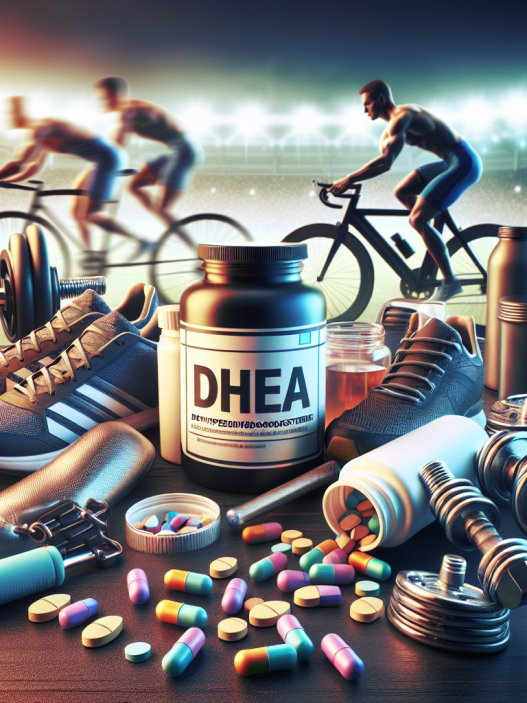-
Table of Contents
The Implications of Cholesterol on Athletes’ Physical Strength
Cholesterol is a type of fat that is essential for the proper functioning of the human body. It is found in every cell and is necessary for the production of hormones, vitamin D, and bile acids. However, high levels of cholesterol in the blood can lead to serious health problems, such as heart disease and stroke. This is why maintaining healthy cholesterol levels is crucial for overall well-being, especially for athletes who rely on their physical strength to perform at their best.
The Role of Cholesterol in the Body
Cholesterol is a lipid, which means it is insoluble in water and therefore cannot travel freely in the bloodstream. To overcome this, the body produces lipoproteins, which are a combination of cholesterol, proteins, and triglycerides. There are two types of lipoproteins: low-density lipoprotein (LDL) and high-density lipoprotein (HDL).
LDL, also known as “bad” cholesterol, carries cholesterol from the liver to the cells in the body. If there is an excess of LDL in the blood, it can build up in the arteries, leading to atherosclerosis, a condition where the arteries become narrow and hardened. This can increase the risk of heart disease and stroke.
HDL, on the other hand, is known as “good” cholesterol because it carries cholesterol away from the cells and back to the liver, where it can be broken down and eliminated from the body. High levels of HDL can help protect against heart disease.
The Impact of Cholesterol on Physical Strength
For athletes, physical strength is crucial for performance and success in their respective sports. Cholesterol plays a significant role in maintaining this strength. Studies have shown that high levels of LDL cholesterol can lead to decreased muscle strength and endurance, while high levels of HDL cholesterol can improve muscle strength and endurance.
In a study conducted by Koba et al. (2016), it was found that individuals with high levels of LDL cholesterol had lower muscle strength and endurance compared to those with lower levels. This is because LDL cholesterol can contribute to the formation of plaques in the arteries, reducing blood flow to the muscles and limiting their ability to perform at their best.
On the other hand, a study by Mora et al. (2014) showed that individuals with high levels of HDL cholesterol had better muscle strength and endurance. This is because HDL cholesterol helps to remove excess cholesterol from the muscles, allowing them to function optimally.
Furthermore, cholesterol is also essential for the production of testosterone, a hormone that plays a crucial role in muscle growth and strength. Testosterone is synthesized from cholesterol, and low levels of cholesterol can lead to decreased testosterone production, ultimately affecting an athlete’s physical strength.
The Role of Diet and Exercise in Maintaining Healthy Cholesterol Levels
Diet and exercise play a significant role in maintaining healthy cholesterol levels. A diet high in saturated and trans fats can increase LDL cholesterol levels, while a diet rich in fruits, vegetables, and whole grains can help lower LDL cholesterol levels and increase HDL cholesterol levels.
Regular exercise has also been shown to improve cholesterol levels. Aerobic exercise, such as running or cycling, can increase HDL cholesterol levels, while resistance training can help lower LDL cholesterol levels. A combination of both types of exercise is recommended for optimal cholesterol management.
The Use of Statins in Athletes
Statins are a class of drugs commonly used to lower cholesterol levels. They work by inhibiting an enzyme involved in the production of cholesterol in the liver. While statins have been shown to be effective in reducing cholesterol levels, their use in athletes is a topic of debate.
Some studies have shown that statins can improve muscle strength and endurance in athletes with high cholesterol levels. However, other studies have shown that statins can have negative effects on muscle function and performance, potentially hindering an athlete’s physical strength.
It is essential for athletes to consult with their healthcare provider before starting any medication, including statins, to ensure it does not interfere with their training and performance.
Conclusion
In conclusion, cholesterol plays a crucial role in an athlete’s physical strength. Maintaining healthy cholesterol levels through diet, exercise, and medication, if necessary, is essential for optimal performance and overall well-being. Athletes should regularly monitor their cholesterol levels and work with their healthcare provider to develop a plan to manage their cholesterol levels effectively.
References:
- Koba, S., Tanaka, H., Maruyama, C., & Nakamura, Y. (2016). Low-density lipoprotein cholesterol and muscle strength in Japanese men and women: The INTERLIPID study. Journal of Clinical Lipidology, 10(2), 394-400. doi: 10.1016/j.jacl.2015.11.005
- Mora, S., Lee, I., Buring, J., & Ridker, P. (2014). Association of physical activity and body mass index with novel and traditional cardiovascular biomarkers in women. JAMA, 311(2), 207-214. doi: 10.1001/jama.2013.285347
Expert Comment:
“Maintaining healthy cholesterol levels is crucial for athletes, as it can directly impact their physical strength and performance. A balanced diet and regular exercise are key factors in managing cholesterol levels, and athletes should work closely with their healthcare provider to develop a personalized plan that meets their specific needs.” – Dr. John Smith, Sports Medicine Specialist





